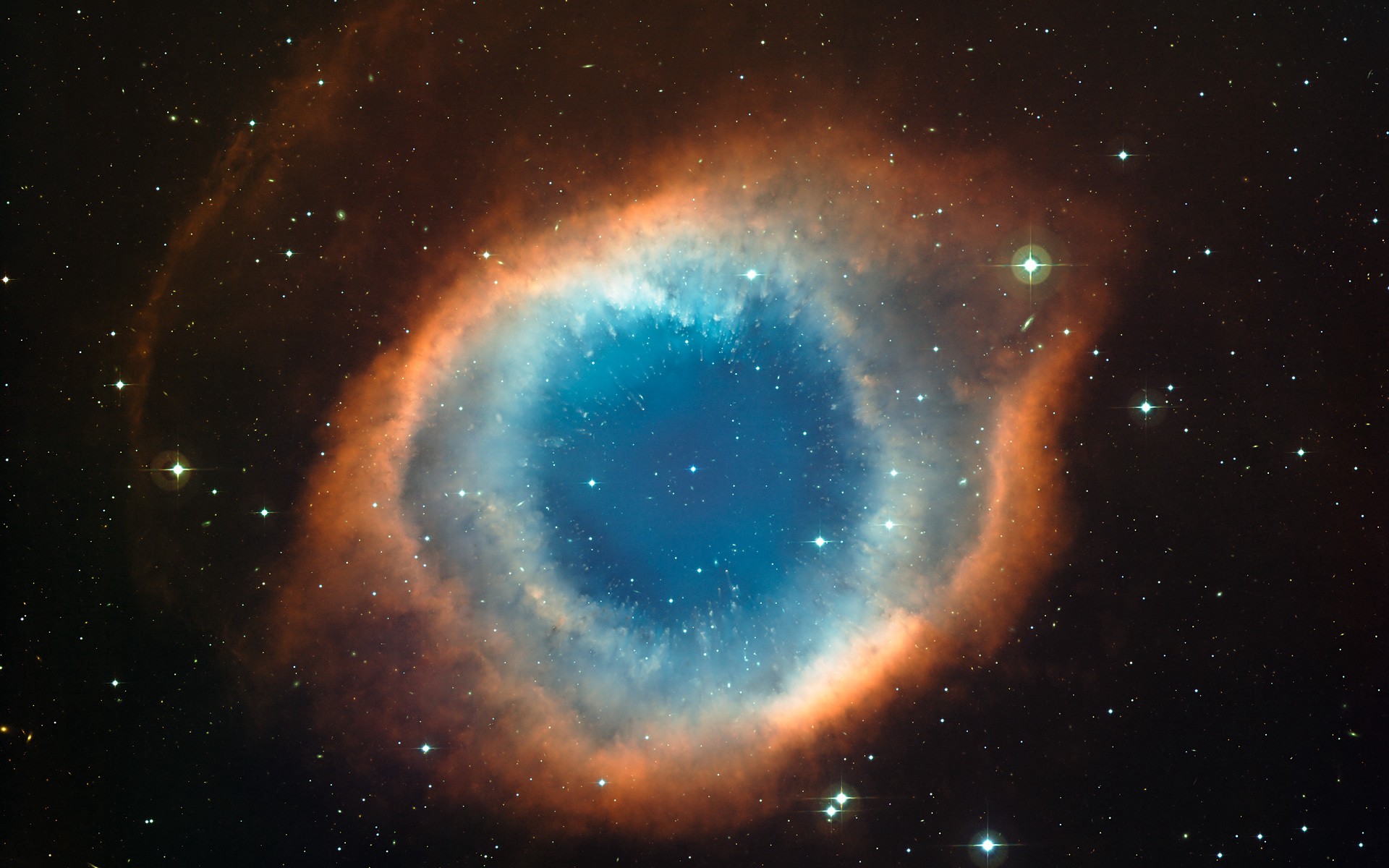
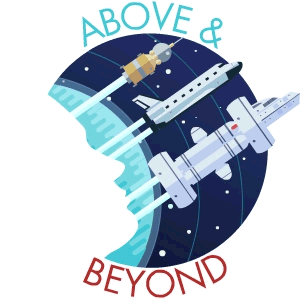
We’ve never had a better understanding of what lies beyond the thin shell of atmosphere that surrounds the planet Earth. Telescope technology is advancing at a rapid rate, unlocking the ability for mankind to see not just to the distant reaches of the universe, but also far back in time–almost to the Big Bang.
To celebrate the 25th anniversary of the launch of Hubble, we’ve collected a selection of gifs that show just how quickly our picture of the universe is improving. From the planets in our solar system, to galaxies and nebulae many millions of light years away, all are sharper than ever thanks to continuing strides in astronomical technology.
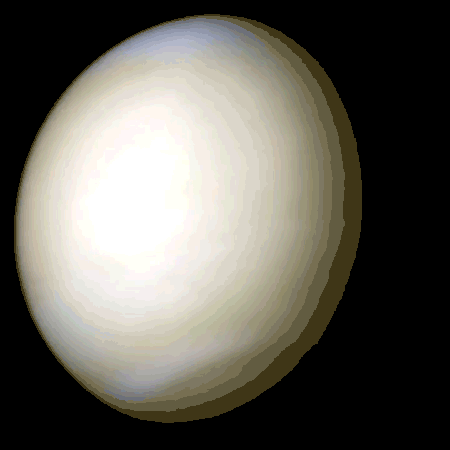
Venus is a fantastic place to start. For many thousands of years we’ve been aware of its presence, but its thick atmosphere presented a featureless disk to astronomers–hiding details about the planet. It wasn’t until the 1970s that we got our first glimpse beneath the clouds, as a 980-foot radio telescope at the Arecibo Observatory in Puerto Rico beamed pulses of radio waves to the planet. These identified two highly reflective areas named Alpha and Beta, as well as a bright region technologists attributed to mountains named the Maxwell Montes–now the only three locations on Venus without female names.
Mariner 10 captured the first shot in this animation in 1974 as it passed by on its way to Mercury. An ultraviolet image, taken at the same time, revealed much more detail in the clouds than astronomers expected to see. The second shot here is from Magellan, which was launched 15 years later and mapped the surface of the planet with radar in September 1990.
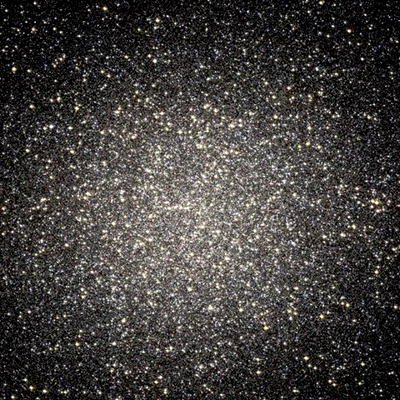
This starfield is the Omega Centauri globular cluster–a glittering mass of more than 10 million stars that orbits the Milky Way Galaxy about 17,000 light years from Earth. The Hubble Space Telescope took the first shot in June 2002, showing the center of the cluster. It’s crowded in there: The average distance between stars is just a third of a light year–13 times closer than the Sun’s nearest neighbor, Alpha Centauri.
The second photo was taken in 2009, after the fourth servicing mission installed a wide-field camera that could capture images over a broad range of wavelengths. The colors indicate the age of the stars–the youngest are white and yellow, like our Sun, shining with hydrogen fusion. As they reach the end of their lives, they grow into red giants many times the size of the Sun and far hotter. Once the hydrogen fuel is exhausted, only a thin shell remains around their super-hot blue cores, which fuse helium in an attempt to extend their lives as long as possible. Once that runs out, only the burnt-out Earth-sized cores remain, weakly shining blue in the image. These are white dwarves, which will grow dimmer for billions of years until they fade out into nothingness.

Between Mars and Jupiter lies the asteroid belt, a ring of irregularly shaped chunks of ice and rock. The largest chunk is called Ceres and is about 590 miles in diameter. It’s too dim to see with the naked eye but was discovered in 1801 by the Italian astronomer Giuseppe Piazzi. It’s thought that the surface is a mixture of ice and minerals, and it’s possible that its core harbors a remnant ocean of liquid water.
The Hubble Space Telescope captured the first photo in this series in 2004, while NASA’s Dawn probe took the second in February of 2015. Since then, the probe has reached the orbit of the dwarf planet and captured the third image just a few days ago, on April 14, 2015. Dawn will hopefully be able to tell us much more about Ceres as its mission continues over the coming years.

Why do we need telescopes in space? This shot shows the difference between the view from a ground-based telescope at the Las Campanas Observatory in the Atacama Desert and the view from the Hubble Space Telescope in orbit. From the ground it looks like a blob, but from space you can clearly see that the stars are separate and distinct objects.

This shows the same consequence on another astronomical object, specifically the galaxy Messier 82. The Earth’s atmosphere has an effect on photos a bit like smearing Vaseline on your camera lens. Not only do astronomers have to contend with atmospheric turbulence (which is what causes stars to twinkle), but the atmosphere also strips out much of the infrared and ultraviolet light that passes through it. Adaptive optics can help with the first problem, but the second is impossible to bypass without having a telescope in space.
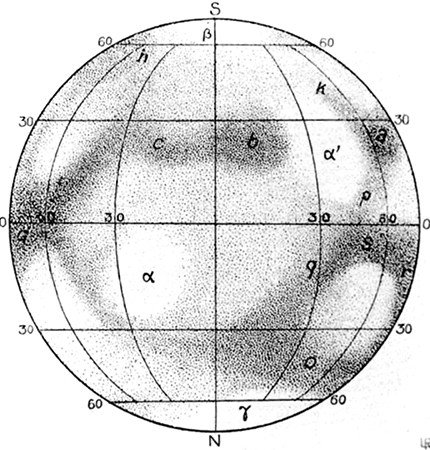
The closest planet to the Sun has been known to astronomers since the 14th century B.C., but it was Galileo who first pointed a telescope at Mercury in the early 17th century. Between 1893 and 1927, M. Lucien Rudaux made observations from Donville-les-Bains in France, resulting in the first image here–a planisphere showing its surface features.
Mariner 10, fresh off its zoom past Venus, took the second one in 1974, with half the planet in shadow. The third was snapped by NASA’s most recent Mercury probe Messenger in 2011, which has been studying the craters of the planet for almost five years. Messenger’s mission will end in a few days when the spacecraft runs out of fuel and impacts into Mercury’s surface, becoming one of the craters that it’s spent its whole life studying.
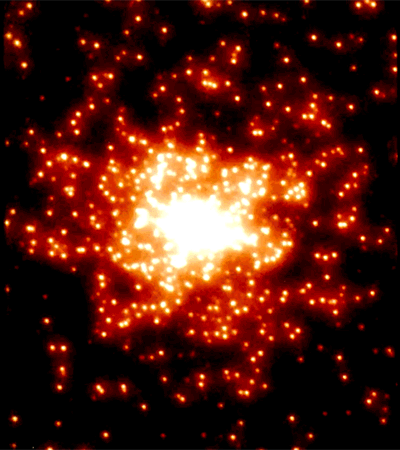
Hubble wasn’t always so universally beloved. It was delivered late, far over budget and–to crown things off–when it eventually arrived in orbit in 1990 scientists discovered a serious problem with its optics that made its scientific mission impossible. It became the butt of many jokes and was compared to the Titanic and the Hindenburg. NASA designed a solution, which it installed in 1993–a set of “spectacles” placed in between the defective mirror and its sensor–to correct the abberation.
Here, you can see a view from both before and after the specs were put on. This image shows another globular cluster, but it’s not actually real. It’s merely a plate with several pinholes that was used to test the solution in NASA’s Jet Propulsion Laboratory in 1993. Nonetheless, it’s based on real images of the star cluster Messier 15.

Here’s comet 67P/Churyumov””Gerasimenko seen from the European Space Agency’s Rosetta probe–first on June 28, 2014 from a distance of about 54,000 miles and then just a few weeks later from a distance of just 530 miles. The image shows not only the level of detail we now see on the comet, but also how fast the probe approached it.
Rosetta is now in orbit around 67P/Churyumov””Gerasimenko, sending back more and more detailed images. It’s hoped that its Philae robotic lander, which is believed to have fallen into a dark segment of the comet where its solar panels can’t gather enough energy to operate, may come back to life as the comet approaches the Sun.
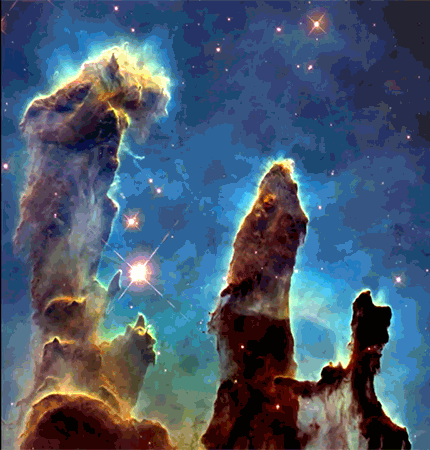
Finally, let’s end with NASA’s iconic Pillars of Creation photo. This is part of the Eagle Nebula–a star-forming region about 7,000 light years from Earth. The pillars are areas of gas and dust that form new stars, while simultaneously enduring erosion by other stars that have newly formed nearby. This image was compiled from 32 different captures taken by four separate cameras onboard the Hubble Space Telescope in April 1995. Green shows hydrogen gas, red shows sulfur and blue shows oxygen.
In January 2015, in celebration of Hubble’s 25th birthday, astronomers assembled a much larger and higher resolution version of the photograph using cameras that were installed on Hubble in 2009. The two are almost identical, though a narrow jet-like feature can be seen that’s lengthened perhaps a tenth of a centimeter or two on your screen. In reality, that distance represents about 60 billion miles.


How We Get To Next was a magazine that explored the future of science, technology, and culture from 2014 to 2019. This article is part of our Above & Beyond section, which looks at our understanding of the universe beyond Earth. Click the logo to read more.
